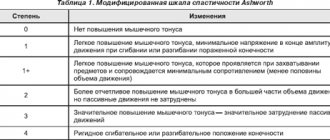Unfortunately, there are still diseases that in a matter of hours bring a seemingly completely healthy person to a critical condition and have an extremely unfavorable prognosis. One of these diseases is Lyell's syndrome (L51.2 according to ICD-10).
A scandalous case of death from this pathology was widely discussed in the media - the death in July 2003 of a journalist, deputy of the State Duma of the third convocation, Yuri Shchekochikhin.
Witnesses noted an inexplicable sharp deterioration in his condition: “in two weeks he turned into a very old man, his hair fell out in clumps, the skin came off his body, almost all of it, one by one the internal organs failed” (“Novaya Gazeta”, issue No. 20 of March 24, 2008 .).
In connection with the death of the deputy, a criminal case was opened under Article 105 of the Criminal Code of the Russian Federation, Part 1 - “Murder”. Relatives and the press, which caught up with the hype, were talking about poisoning, in particular with thallium. The relevant examinations were carried out for seven months, and the deputy’s body was exhumed. Only by March 2004 were the circumstances of the rapid deterioration of Shchekochikhin’s condition established. Diagnosis and cause of death: Lyell's syndrome, acute cardiovascular failure.
From the history of the syndrome
This pathology was first described in 1956 by Scottish dermatologist Alan Lyell. He systematized 11 reports of 14 cases of this disease, 4 of which he personally observed.
Lyell replaced the previously accepted designation “acute pemphigus” with “toxic epidermal necrolysis” (TEN). The fact is that in all patients o. The rash served as the main diagnostic sign for identifying a new nosological unit. Lyell coined the term “toxic” because he believed that the disease was caused by toxemia, a specific toxin circulating in the body. “Necrolysis” is a medical neologism invented by Lyell himself, who combined in it the main clinical sign - “epidermolysis” and the histopathological sign - “necrosis”.
Lyell also noted the severity of damage to the mucous membranes and the unusual weakness of inflammatory processes in the dermis - “dermal silence.”
In the scientific world, the disease received the name of its discoverer during Lyell’s lifetime - in the 60s. However, the dermatologist himself always used the designation TEN.
In 1967, after conducting a targeted survey of colleagues throughout the UK, Lyell presented the most extensive summary of TEN to date - 128 cases of the disease. In the same year, he described 4 forms of TEN, corresponding to a specific etiology: staphylococcal, drug, mixed and idiopathic.
“Necrolysis” is a medical neologism invented by Lyell himself, who combined in it the main clinical sign - “epidermolysis” and the histopathological sign - “necrosis”.
Currently, the staphylococcal form of Lyell's syndrome is identified as a separate nosological unit: staphylococcal scalded skin syndrome (SSSS, L00 according to ICD-10).
Epidemiology
Since the 70s, medicine has kept an annual record of the prevalence of Lyell's syndrome. According to various authors, rates range from 0.4–1.3 cases per 1 million population per year. Mortality rates range from 20–60% of the number of cases, depending on the state of the region's health care system. Thus, the number of deaths from this pathology throughout the world per year is in the thousands. Among immediate allergic reactions, Lyell's syndrome is second only to anaphylactic shock in terms of mortality. In the general structure of drug allergies, the share of Lyell's syndrome is 0.3%. Women are more often affected: the ratio to male patients is 1.5:1. There was no direct relationship between the risk of the disease and age. Patients who have previously had Lyell's syndrome, especially in childhood, are considered a risk group.
The most common form of the syndrome is medicinal, up to 80% of all cases. After medicinal, the second most common cause is malignant neoplasms (especially lymphomas). The frequency of idiopathic cases of the syndrome is 5–10%.
In children, Lyell's syndrome more often - up to 60% of cases - has an infectious etiology. A special risk group for the manifestation of the disease among children is those who suffered from acute respiratory viral infections at an early age and underwent a course of treatment with NSAIDs in connection with this.
Etiology
Discussions about the etiology and pathogenesis of Lyell's syndrome continue. The most studied drug form of the disease, which develops due to a violation of the body’s ability to neutralize reactive intermediate drug metabolites. These metabolites interact with tissues, resulting in the formation of an antigenic complex, the immune response to which initiates the development of the disease.
In fact, a genetic predisposition to this pathology has also been proven, in particular in individuals with a number of HLA histological compatibility complex antigens: A2, A29, B12, B27, DR7. The presence of chronic foci of infection in the body (sinusitis, tonsillitis, cholecystitis, etc.), leading to decreased immunity, increases the risk of disease. HIV-infected patients are a special risk group: their risk of developing Lyell's syndrome is 1000 times higher than in the general population.
Pathogenesis and pathomorphology
Despite the fact that Lyell's syndrome is considered a polyetiological disease, drugs - antibacterial, sulfonamide, anti-inflammatory and anti-tuberculosis - play an important role in its development. After the medication is administered to an organism with impaired neutralizing function, the allergen interacts with the proteins of the epidermis.
The top layer of skin is perceived as “foreign”. The immune system begins to intensively produce antibodies against it. The result of complex immunological reactions is necrosis of the epidermis and its detachment. Protein breakdown products have a toxic effect on the body, which leads to further rapid progression of the pathology.
Hereditary factors play an important role in the development of the syndrome. About 10% of the human population has a genetic predisposition to allergic sensitization of the body.
Factors provoking the development of the disease:
- self-medication,
- using medications without medical advice,
- ecological problem,
- X-ray contrast examination of patients,
- negligent attitude of doctors towards their immediate duties,
- immunodeficiency and decreased nonspecific resistance of the body,
- medical errors.
Pathomorphological stages of disease development:
- Erythematous - the appearance of erythema on the skin within 2-3 days.
- Bullous - the formation of irregularly shaped blisters with thin walls that merge with each other.
- Desquamation - rupture of blisters, and the appearance in their place of extensive erosion surfaces.
With Lyell's syndrome, patients develop aphthous stomatitis, conjunctivitis, and ulcerative necrotic inflammation of the male and female genital organs.
Diagnostics
For differential and laboratory diagnosis, provocative tests are not performed, since the risk of uncontrolled complications is high. The most common are extraorganismal diagnostic tests based on the reactions of the patient’s blood cells to a substance that has sensitized the body. These include: the Shelley basophil degranulation test, the Fleck leukocyte agglomeration test, the blast transformation reaction of lymphocytes, hemolytic tests.
HIV-infected patients are 1000 times more likely to develop Lyell's syndrome than the general population.
Apoptosis of keratinocytes is one of the first tissue morphological signs of Lyell's syndrome. Needle biopsy using frozen skin sections is becoming increasingly common. This reveals the absence of typical acantholytic cells, total epidermal necrolysis, sub- and intraepidermal blisters.
Flow
Based on the nature of the course, there are three variants of the clinical picture of Lyell’s syndrome:
- Fulminant form - up to 10% of all cases. Develops over several hours. Etiology: idiopathic or drug-induced. Skin lesions cover up to 90% of the body surface per day. Impaired consciousness up to coma. Acute renal failure - anuria. Due to the fact that most of these patients do not survive to hospitalization or are admitted in a terminal condition, the fatal outcome is 95% within 2–3 days. At autopsy, the internal organs are usually intact.
- Acute form - 50–60% of cases. Damage to the skin and mucous membranes goes through the entire spectrum of maturation: from rashes to necrolysis. The area of necrolyzed surfaces can reach 70% of the body surface. The disease lasts from 7 to 20 days. Starting from 3–4 days, symptoms of renal, hepatic, cardiovascular, and pulmonary failure appear, as well as infectious complications—primarily pulmonary and genitourinary system infections—and as the disease progresses, sepsis. Mortality reaches 60%.
- Favorable course (smoothed form) - frequency up to 30% of cases. Damage to the skin and mucous membranes does not exceed 50% of the body surface. Clinical manifestations reach their peak on days 5–6 of the disease. Then, within 3–6 weeks, the patient’s condition improves until full health is restored.
The overwhelming majority of patients - more than 90% - have erosive changes in the mucous membranes. Typical complaints are pain along the urethra during urination and photophobia.
A positive Nikolsky symptom is characteristic: detachment of the epidermis on externally unchanged skin with sliding pressure and detachment of the peri-vesical epidermis when pulling on a piece of the vesical tire. In especially severe forms, total detachment of the epidermis is observed due to friction over the entire surface of the patient’s body.
Symptoms
Previously, Lyell's syndrome with an area of skin affected less than 10% was called Stevens-Johnson syndrome. It is currently considered a milder form of toxic epidermal necrolysis with a fatality rate of less than 5%. Both of these syndromes are characterized by involvement of the mucous membranes in the process (in more than 90% of cases of the disease). Forms with an area of skin damage from 10 to 30% are classified as intermediate.
Manifestation of Lyell's syndrome
In the clinical course of the disease, 3 periods are conventionally distinguished:
- Prodromal, which develops in the first 2 weeks after starting to take the corresponding drug (usually in the first 2-3 days). Sometimes this period is several hours and even (rarely) 1 hour.
- Critical, or acute.
- Recovery.
Prodromal period
Usually the disease begins with a rapid increase in body temperature to 38-41°. The general condition suddenly becomes severe, severe chills, general weakness and malaise, headache, pain in the joints and muscles, lumbar region, pain when swallowing, enlarged peripheral lymph nodes, loss of appetite, and slight nasal congestion appear. Symptoms of the prodromal period can occur 1-2 days before skin manifestations, which often leads to erroneous diagnosis of influenza or respiratory viral infection and too late discontinuation of the drug that caused acute epidermal necrolysis.
In addition to these signs, an inflammatory process of the mucous membrane of the oral cavity, nose, eyelids, conjunctiva, and genitals is often noted. Often the patient complains of a feeling of moderate pain, burning and itching of the skin.
Acute period
It is characterized by the progression of lesions of the mucous membranes and skin, as well as dysfunction of internal organs and systems - changes in the blood count and metabolic disorders appear. In the critical period, 3 stages are also conventionally distinguished:
Erythematous
Resembles eruptive elements on the skin and mucous membranes of exudative erythema multiforme. The rash is represented by erythematous spots, roseola, papules, and pustules. A papular-erythematous rash is typical of the onset of the disease and is located symmetrically, appearing first on the face, then on the limbs and trunk. The rash is profuse, disseminated. Most often, it takes the form of deep red, swollen spots that enlarge and merge with each other, forming large lesions.
Bullous
After 2-3 days, large, irregularly shaped, thin-walled blisters with a brownish tint and a flabby covering form in the center of the erythematous spots. Bubbles tend to merge. When pressed, their area can increase significantly, reaching even the area of the palmar surface of the hand (Asbo-Hansen symptom). This stage is characterized by a burning sensation and itching of the skin, increased and impaired sensitivity of not only the affected, but also healthy areas of the body. In addition, there is such severe pain in the skin that even a light touch of the sheet causes it. Dehydration develops, accompanied by excruciating thirst.
Related articles: Bullous dermatitis
Desquamation
It is characterized by slight rupture of blisters with exposure of extensive erosive surfaces of cyanotic-red color with serous-hemorrhagic discharge. Erosions are sharply painful when touched and bleed easily. Very quickly, almost the entire skin surface takes on the appearance of a II-III degree burn. At this stage, sharply positive Nikolsky’s symptom and its variety of Asbo-Hansen’s symptom are noted, as well as symptoms of “wet underwear” (under the influence of a finger, the epidermal layer easily slides, shifts and wrinkles), and “socks and gloves”, when peeled off on the fingers and feet the epidermis retains their shape.
Nikolsky's sign consists of peeling of the epidermis in an area of apparently normal skin when sliding a finger over it with slight pressure, as well as peeling of the epidermis near the bladder when pulling on pieces of the covering of the bladder. In especially severe cases, detachment of the entire epidermis on the entire skin surface of the body is observed during finger rubbing. A petechial rash may appear.
More than 90% of patients have erosions on the mucous membranes. Multiple painful and easily bleeding erosions appear on the lips and oral mucosa. On the lips they are covered with bloody crusts and cracks, which makes eating much more difficult. Often there is damage to the mucous membranes of the eyes with the formation of erosive blepharitis, conjunctivitis and iridocyclitis, as well as the pharynx and esophagus, larynx, trachea and bronchi, urethra and bladder, and genitals. Typical complaints with damage to the mucous membranes are photophobia and pain in the urethra.
The duration of the critical period depends on the rate of spread of skin lesions and the involvement of internal organs in the process, the presence of concomitant chronic infections and diseases of internal organs, as well as on the effectiveness of treatment and the timeliness of its initiation. Under unfavorable conditions, the acute period lasts about 3-5 days and in 30-70% of cases ends in death.
Causes of death:
- pronounced disturbance of the acid-base state and water-electrolyte balance;
- significant hemodynamic and microcirculatory disorders;
- severe intoxication of the body;
- development of disseminated intravascular coagulation syndrome (thrombohemorrhagic syndrome);
- disorder, mainly of protein metabolism;
- loss of the barrier function of the skin, infection against this background and the development of sepsis;
- respiratory, renal, liver and heart failure.
Recovery
Its duration depends on the same (listed above) factors. It is characterized by the cessation of detachment of the epidermal layer and re-epithelialization of the affected areas.
Depending on the nature of the course of toxic epidermal necrolysis, there are 3 forms:
Lightning fast
Or hyperacute, which accounts for up to 10% of all cases of the disease. The cause is medication or idiopathic. Within 1 day, up to 90% of the entire skin surface is affected. Acute renal failure, impaired consciousness, and coma develop. Such patients very often arrive at the hospital in an extremely serious, terminal condition or do not survive to hospitalization at all. Death occurs already on the 2nd – 3rd day from the onset of the disease and is 95%.
Spicy
Accounts for about 50-60% of all cases. The disease occurs in all stages, from rash to necrolysis. The affected surface area can reach 70%. The duration of the acute form is 7-20 days. From the 3rd – 4th day, symptoms of hepatic-renal, cardiovascular failure, as well as complications of an infectious nature of the lungs and genitourinary organs, are noted. Progression of the disease often leads to sepsis. Fatal outcome is observed in 60%.
Favorable
Or smoothed, the frequency of which in the total number of patients with Lyell's syndrome is on average 30%. The skin and mucous membranes are affected in no more than half of patients with a smoothed form. The disease reaches its highest manifestation on the 5th – 6th day, after which over the course of 3-6 weeks there is a gradual regression of symptoms and a complete restoration of health.
In addition, depending on the nature and extent of skin symptoms, the degree of involvement of the mucous membranes and internal organs, three variants of Lyell's syndrome are distinguished:
- atypical;
- with spots;
- without spots, which is a typical variant of toxic epidermal necrolysis.
Stephen-Johnson syndrome or Lyell's syndrome?
One of the main prognostic factors for Lyell's syndrome is the area of the necrolyzed surface. Therefore, a correct assessment of its length is very important. For this, the same rules are used as in combustiology: the rule of “nine” - when the arms, chest and stomach are considered to be 9% of the body surface, and the back and legs are 18% each; and the “one percent palm” rule. For a more accurate assessment, it is recommended to measure the area of the separated and separated epidermis not only in areas with pronounced erythematous changes, but also in areas of the body remote from the “epicenter”. Depending on the area of the surface affected by necrolysis, clinical differences between Lyell’s syndrome and Stephen-Johnson syndrome are distinguished.
For 30 years - since the late 70s - corticosteroids were considered an essential part in the treatment of Lyell's syndrome. In recent years, criticism has emerged regarding their effectiveness: in particular, it is indicated that their use increases the risk of septic complications.
In recent years, the theory has been gaining popularity that these syndromes are two variants of the severe outcome of an epidermolytic skin reaction to medications and differ only in the degree of skin detachment.
Main symptoms
The general health of patients with Lyell's syndrome deteriorates immediately, and the symptoms of the disease constantly progress. First, there is an increase in body temperature to 39-40⁰C. Within a few hours, painful, swollen red spots of varying diameters form on the body, mucous membranes of the mouth and genitals.
After 12 hours, exfoliation occurs on apparently intact areas of the skin with the formation of flaccid blisters of various sizes and shapes. After their spontaneous opening, erosive surfaces remain covered with scraps of skin. They swell and secrete serous-bloody fluid, which leads to dehydration.
Even a slight touch to the patient’s body provokes a lag in the epidermis. As a result, any prolonged compression or friction on areas of the skin leads to the formation of erosions without the formation of blisters.
With Lyell's syndrome, the patient's body quickly becomes inflamed, painful, and red. It looks like the body of a person burned by boiling water. A characteristic sign of “wet underwear” appears, in which the skin, in contact with a foreign object, easily moves out of place and wrinkles.
Symptoms of dehydration increase, blood pressure drops, and blood tests reveal a significant increase in ESR. The patient's body becomes infected and begins to fester. General allergies, together with severe intoxication, provoke thickening of the blood, slowing down blood circulation, disrupting the functioning of the liver, kidneys, cardiovascular system, and respiratory organs. In the absence of adequate treatment, the patient's death is likely.
Systemic therapy
Unfortunately, there are no uniform clinical recommendations for diagnosed Lyell's syndrome. This is primarily due to the multi-organ nature of the lesions, which presupposes, first of all, multidirectional symptom-based therapy. For the treatment of Lyell's syndrome, the rule of “cancelling the last” prescribed medication is most often ineffective, since the time of manifestation of the disease varies from several hours to several days. Therefore, it is recommended to discontinue all previously prescribed medications and emergency symptomatic therapy. It has been confirmed that quick and total withdrawal of all medications when it is impossible to clearly identify a specific allergen improves the prognosis of the disease by 30%. As part of the specific treatment of allergic Lyell's syndrome, most researchers clearly recommend:
- emergency, preferably in the first hours of the disease, cascade plasma filtration (plasmapheresis), which allows removing up to 80% of the patient’s plasma. If plasmapheresis is technically impossible, hemosorption is recommended;
- massive systemic corticosteroid therapy. Recommended corticosteroid regimens range from 3–4 mg/kg body weight on the first day of illness to complete prohibition as the patient’s condition worsens;
- intravenous immunoglobulins. The daily dose, starting from the first day of the disease, varies from 0.2 to 0.75 g/kg of the patient’s body weight. The duration of the cycle is from 4 to 12 days. The effectiveness of immunoglobulins is due to the content of natural anti-Fas antibodies that regulate apoptosis and proliferation in intact and transformed lymphoid cells. They reduce the incidence of bacterial complications and prevent progression of the syndrome;
- hyperbaric oxygenation in the absence of abscesses, cavities and free airway patency in the patient’s lungs.
Treatment of lesions of the skin and mucous membranes is carried out according to the principles of burn therapy. The parenteral nutrition regimen is observed. Correction of infusions is carried out depending on the patient's condition.
During the period of hospitalization, regular - at least once every 72 hours - examinations by a urologist, ophthalmologist, dentist, or otolaryngologist are required in order to promptly identify and prescribe appropriate therapy for damage to the mucous membranes.
Treatment
At the first signs of Lyell's syndrome, it is necessary to urgently go to the hospital, the patient is hospitalized. Doctors begin to fight for the patient’s life; if the correct treatment is not started in time, the outcome can be fatal. Blood tests, water, salt, and protein balance are equalized, and the vital function of important organs is restored.
There are several treatment methods, which we will now consider.
Extracorporeal hemosorption . One of the most effective treatment methods. It is carried out at an early stage, in the first couple of days of the disease. With proper and timely treatment, complete recovery is possible in the first two to three procedures. When visiting a doctor after a week of illness, a minimum of five procedures will be required.
Plasmapheresis . Thanks to it, toxic substances are removed from the body in case of Lyell's syndrome, and the body's disturbed immune system is also normalized. Plasmapheresis for Lyell's syndrome is performed two or three times depending on the patient's condition.
Complex therapy is carried out in which medications are used that: support the functioning of the kidneys and liver; drugs that restore damaged tissue; potassium, calcium, magnesium preparations; drugs that reduce blood clotting; diuretics; antibiotics.
The patient undergoing treatment should be in a warm room. Change bed linen every day, preferably more than once a day, change clothes often, before dressing the patient, analgesics must be used because this procedure is very painful.
Forecast
Since 2011, the SCORTEN scale for assessing the severity of Lyell's syndrome has been widely used in the West. It takes into account the following prognostic factors:
- patient age > 40 years;
- Heart rate > 120 beats. in min.;
- presence of concomitant malignant oncological disease;
- affected body surface area > 10%;
- blood urea level > 10 mmol/l;
- plasma bicarbonate level
- blood glucose > 14 mmol/l.
The presence of each factor increases the risk of death. Thus, the approximate risk of death is: in the presence of 1 factor - up to 3.2%; 2 factors - 12.1%; 3 factors - 35.3%; 4 factors - 58.3%; 5 or more factors – 90%.
Clinical case
In 2009, in Donetsk, I witnessed a rare case for Donbass (only 6 cases in the Donetsk region from 1991 to 2013!) case of Lyell's syndrome.
Patient: 37 years old. Allergic and infectious anamnesis are not burdened. Three days before admission, she fell ill with a cold. She was treated with “familiar” medications: cough tablets, eye drops, nasal drops, vitamins. From the evening of the second day, itching and rashes appeared. She took suprastin on her own. After short-term relief, the condition worsened. In the evening on the third day, after fainting, she was taken to the city hospital by emergency medical services, and within a few hours was transferred to a regional clinic. A woman was admitted with hyperemic skin on her chest, shoulders, and inner thighs. On the third day, bubbles filled with cloudy contents appeared. The volume of others reached 100 ml. Throughout the entire period, hyperemia of the eyelids, sclera, mucous membranes of the oral cavity, and perianal area persisted.
From the third day, the combustiologist made repeated attempts to close the wound surface of the xenoskin. However, short-term periods of calm were replaced by psychomotor agitation in the patient, which led to displacement of the bandages and xenoskin. Not a single flap took root. Over the course of two weeks in the intensive care unit, the patient spent more than half of the time in forced medicated sleep. And from the sixth day, when the patient’s condition became critical, she was transferred to permanent mechanical ventilation.
In this case, Lyell's syndrome was diagnosed within two days after the patient was admitted to the hospital; the course of the disease was not lightning fast, but rather acute; Asymptomatic therapy was carried out, but it was not possible to save the woman.








